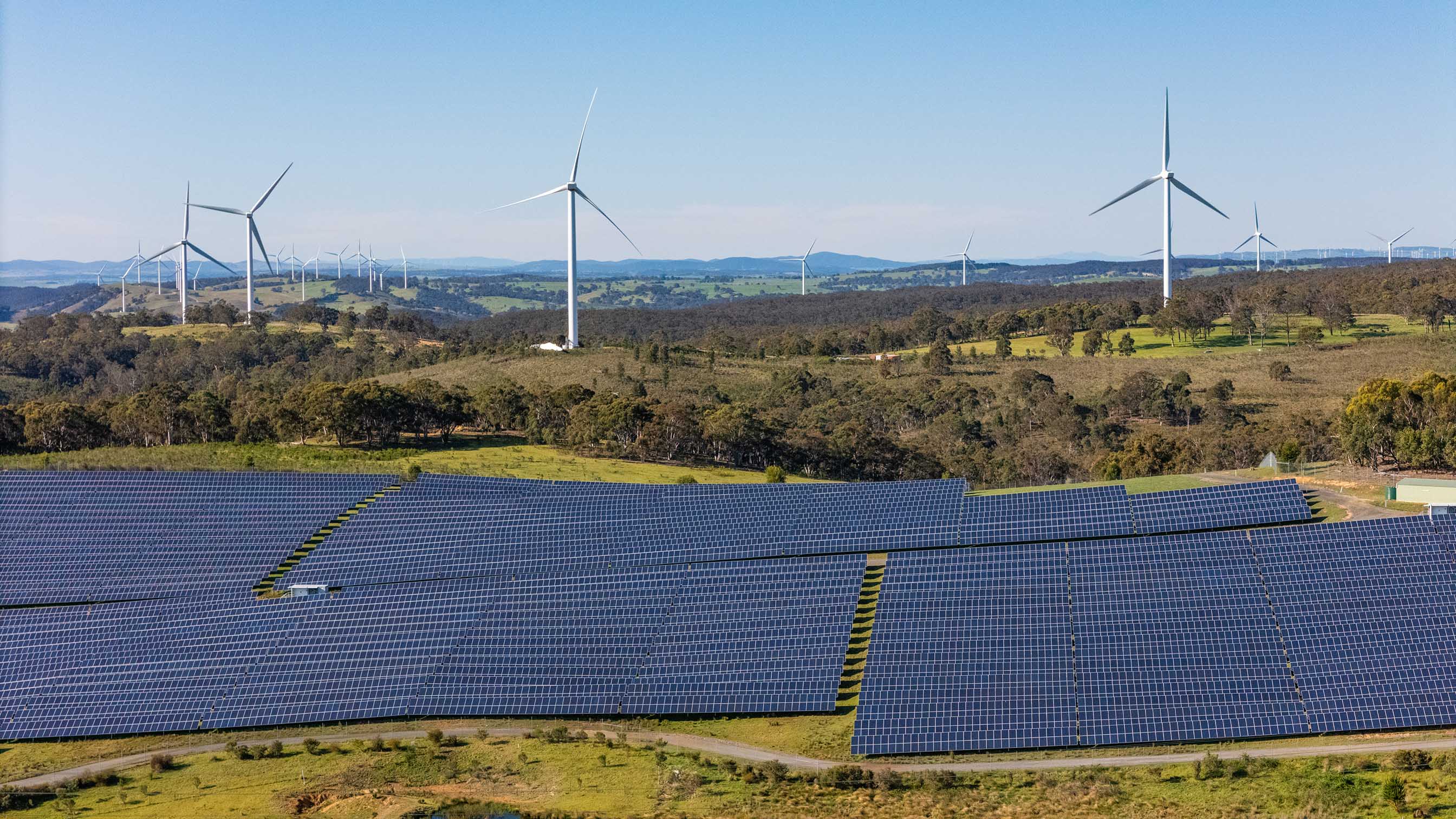
Renewable Energy Has a Valuation Problem
Renewable Energy Has a Valuation Problem
CRE Financing is Missing the Distributed Energy Revolution
After 25 years building technology platforms I've learnt one fundamental truth: when the numbers don't align with reality, something is broken.
We're seeing exactly this in how commercial real estate projects with distributed energy systems get financed.
The Investment Paradox
Record capital is flowing into renewable energy. The IEA reports US$1.8 trillion invested globally in clean energy in 2023. Yet project valuations for distributed energy assets continue to crater.
The disconnect isn't market volatility. It's fundamental flaws in how we assess value.
In Australia, this creates a particularly acute problem. Our commercial property sector is sophisticated, our renewable energy potential is massive, yet financing for integrated distributed energy projects remains unnecessarily complex.
The LCOE Problem Every CFO Needs to Understand
Most financial models still rely heavily on Levelised Cost of Electricity (LCOE) to evaluate energy projects.
It's the equivalent of judging a modern trading platform by 1990s metrics. I know - I built those systems.
LCOE treats a rooftop solar installation the same way it evaluates a utility-scale plant. That's like comparing a distributed microservices architecture to a mainframe. They serve fundamentally different purposes, deliver different value, and require different evaluation frameworks.
Academic research published in 2024 confirms LCOE systematically fails to capture the economic value that distributed energy resources provide to property owners and the broader grid.
This creates systematic bias against exactly the technologies that make commercial properties more valuable and resilient.
What Traditional Valuations Miss
The IEA data shows distributed solar represents 40% of global renewable capacity additions. In Australia, commercial and industrial installations are driving significant growth.
Yet these projects consistently struggle to access appropriate financing.
The problem isn't the technology. It's the valuation framework.
Traditional financial models systematically ignore:
Grid resilience benefits. Distributed systems provide backup power during outages. In Australia, where grid reliability varies significantly by region, this matters.
Transmission loss avoidance. On-site generation eliminates the 6-8% losses typical in grid transmission. For large commercial properties, that's real money.
Peak demand management. Battery storage can slash demand charges. I've seen this reduce operating costs by 15-20% for commercial properties.
Tenant attraction and retention. Sustainability credentials increasingly drive leasing decisions, particularly from multinational tenants with ESG mandates.
Asset value enhancement. Properties with integrated energy systems command premium valuations. The market is recognising this, even if traditional financing models aren't.
None of these benefits appear in standard LCOE calculations. Yet they're precisely what makes distributed energy valuable for commercial real estate.
How This Plays Out in Practice
I've seen this pattern repeatedly across projects. Large-scale renewable projects secure financing easily because they score well on traditional metrics.
Meanwhile, innovative commercial developments with integrated distributed energy systems face higher costs of capital and more complex approval processes.
The evaluation framework penalises exactly what makes these projects valuable: their distributed nature, grid integration benefits, and localised value creation.
This bias shapes entire market structures. When lenders and investors rely on outdated metrics, capital flows toward larger, centralised projects that may deliver less overall value to the property owner and the grid.
The Scale of the Problem
Globally, the IEA reports over 1,650 GW of renewable capacity is currently waiting for grid connections. That's 150 GW more than last year.
Much of this backlog consists of distributed projects that struggle to demonstrate value under traditional assessment methods.
For Australian commercial property developers, this translates to missed opportunities. Projects that integrate distributed energy systems often face financing challenges, despite delivering superior long-term value propositions.
The Australian Energy Market Operator's Generation Information data shows increasing penetration of distributed energy resources across the NEM. Yet financing structures haven't evolved to match this reality.
What Progressive Markets Are Doing
Some markets are already addressing this gap.
New York's Value of Distributed Energy Resources (VDER) framework recognises benefits traditional methods miss: avoided carbon emissions, grid support services, resilience benefits, and cost savings.
When evaluation methods capture the full benefit stack, distributed energy becomes highly competitive with centralised alternatives.
Australia needs similar frameworks. Our commercial real estate sector is sophisticated enough to demand better assessment methodologies that recognise the true value of distributed energy integration.
The Clean Energy Regulator's data on commercial solar installations shows strong growth, but financing structures remain stuck in traditional evaluation frameworks.
Technology Solutions Exist
The solution requires what we do best in fintech: better data, standardised processes, and comprehensive evaluation frameworks.
Properties with integrated distributed energy systems offer enhanced returns, but traditional financing structures struggle to recognise these benefits.
The technology exists to solve this. Advanced analytics can model the full value stack of distributed energy systems. Real-time monitoring provides verifiable performance data. Smart contracts can automate value recognition and payment flows.
What's missing is industry adoption of comprehensive evaluation frameworks that capture this value.
The Opportunity for Australian Finance
This evaluation creates significant opportunities for financial institutions and commercial real estate professionals.
Lenders who develop sophisticated evaluation capabilities for distributed energy projects will gain competitive advantages. Commercial mortgage brokers who understand these technologies can better serve innovative developers. Real estate investors who recognise the true value of integrated energy systems will outperform those stuck with traditional metrics.
The transition is happening whether traditional finance adapts or not.
Commercial tenants increasingly demand sustainable, resilient properties. Regulatory frameworks are evolving to support distributed energy. Insurance premiums are starting to reflect the resilience benefits of on-site generation and storage.
The Australian Prudential Regulation Authority's focus on climate-related financial risks means lenders will need better frameworks for evaluating energy-integrated properties regardless.
What Needs to Happen
The renewable energy sector needs better evaluation methodologies. Commercial real estate financing must evolve alongside it.
From a technology perspective, the solutions are straightforward: comprehensive data collection, advanced analytics, and standardised evaluation frameworks that capture the full value of distributed energy systems.
From a market perspective, early adopters will benefit most. Financial institutions that develop sophisticated distributed energy evaluation capabilities will capture market share from competitors stuck with outdated methodologies.
The evaluation crisis won't resolve itself. It requires active engagement from CFOs, commercial mortgage brokers, real estate investors, and lenders who recognise that the future of commercial property is integrated, distributed, and resilient.
The opportunity is there. The numbers need to add up properly. The future of Australian commercial real estate financing depends on it.
References
International Energy Agency. (2024). World Energy Investment 2024. Available at: https://www.iea.org/reports/world-energy-investment-2024
Bistline, J., et al. (2024). "Limitations of the levelised cost of electricity for comparing renewable energy technologies." Applied Energy, 334, 120585. Available at: https://www.sciencedirect.com/science/article/pii/S2214629624004882
International Energy Agency. (2024). Renewables 2024: Analysis and forecast to 2029. Available at: https://www.iea.org/reports/renewables-2024
Australian Energy Market Operator. (2024). Generation Information. Available at: https://aemo.com.au/en/energy-systems/electricity/national-electricity-market-nem/nem-forecasting-and-planning/forecasting-and-planning-data/generation-information
Clean Energy Regulator. (2024). Postcode data for small-scale installations. Available at: https://www.cleanenergyregulator.gov.au/RET/Forms-and-resources/Postcode-data-for-small-scale-installations
Australian Prudential Regulation Authority. (2024). Climate change financial risks. Available at: https://www.apra.gov.au/climate-change-financial-risks
New York State Energy Research and Development Authority. (2024). Value of Distributed Energy Resources. Available at: https://www.nyserda.ny.gov/All-Programs/NY-Sun/Contractors/Value-of-Distributed-Energy-Resources

